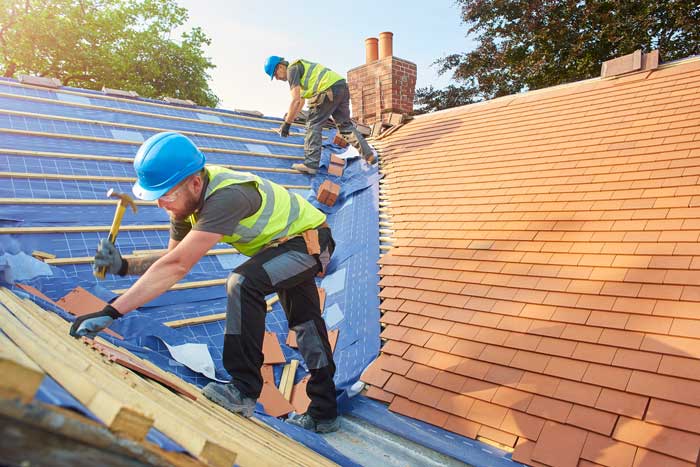Taking Full Advantage Of Power Effectiveness With Appropriate Roofing Techniques for Your Sustainable Home Enhancement
In the realm of lasting home enhancement, the significance of making best use of energy efficiency with proper roofing techniques can not be overstated. Your choice of roofing materials, insulation methods, and air flow systems can considerably impact your home's energy usage and general ecological footprint. By understanding the function that your roof plays in maintaining ideal power efficiency, you can make enlightened decisions that benefit both your pocketbook and the world. Allow's check out the vital considerations and strategies that can assist you accomplish a more sustainable and energy-efficient home through thoughtful roof covering methods.

Significance of Correct Roof Covering Materials
Roof materials play a significant function in the general energy efficiency and durability of a house. By spending in high-quality roofing materials, property owners can guarantee that their roofing systems have a longer life-span, hence reducing waste and contributing to a more sustainable atmosphere.
Energy-efficient roofing products, such as amazing roof coverings or environment-friendly roofing systems, can additionally help house owners lower their power consumption. Choosing roofing materials that prioritize toughness and power effectiveness is not only helpful for the setting however additionally for the lasting maintenance and energy prices of a home.
Enhancing Insulation for Energy Cost Savings
Provided the important function that correct roof materials play in energy performance and sustainability, enhancing insulation within the home comes to be a critical consideration for maximizing power cost savings. Adequate insulation helps in keeping a constant indoor temperature level, reducing the reliance on heating and cooling down systems, and ultimately lowering power usage. When it concerns boosting insulation for energy savings, house owners must think about elements such as the R-value of insulation materials, correct installation techniques, and securing any type of spaces or air leakages that can compromise the efficiency of the insulation.
Choosing insulation materials with a high R-value is essential for optimizing energy effectiveness. By taking these actions to boost insulation, property owners can considerably reduce power prices, reduce heat loss or gain, and create an extra comfortable and sustainable living atmosphere.
Optimizing Roofing Ventilation for Efficiency

In addition, gable vents and roof covering wind turbines can supplement this air flow, specifically in bigger or more complicated roofing system structures. By prioritizing proper roofing system ventilation, homeowners can enhance power effectiveness, lengthen the life expectancy of their roof, and contribute to a much more lasting living atmosphere.
Lasting Roof Covering Choices to Consider
Reliable roof ventilation not just boosts the sustainability of a home but likewise establishes the structure for exploring sustainable roof choices that straighten with ecological awareness and long-term resilience. When thinking about sustainable roofing products, one prominent choice is metal roof. Metal roofing systems are durable, recyclable, and energy-efficient because of their ability to mirror sunshine, lowering cooling costs. An additional environmentally friendly option is great roofs, which are made to show more sunshine and take in less warmth than conventional roof covering materials, thus reducing energy intake for cooling. Furthermore, amazing roofs can aid reduce the metropolitan warmth island effect by reducing local temperature levels. For those curious about all-natural visual appeals, cedar tiles or drinks give a lasting alternative as they are eco-friendly, sustainable, and deal all-natural insulation properties. Solar roof systems have obtained appeal for utilizing eco-friendly power to power homes effectively. By including these lasting roof options, house owners can not just reduce their ecological impact yet additionally gain from long-lasting and energy-efficient roof covering options.
Upkeep Tips for Long-Term Performance
To ensure the long-term efficiency of your sustainable roof covering system, regular upkeep is crucial. Inspect for any kind of signs of mold, algae, or moss growth, as these can deteriorate the roof covering materials over time. Attend to any kind of problems without delay to stop further damage and maintain the power effectiveness of your home.
In addition to normal assessments, take my blog into consideration hiring a specialist professional roofer to execute a thorough analysis every couple of years. Royale Home Improvements roofer Totowa NJ. They can assess the problem of the roofing system, determine any underlying issues, and advise needed repair work or upkeep. Investing in proactive upkeep will not only prolong the lifespan of your lasting roof system but also maximize its energy efficiency in the future
Verdict
